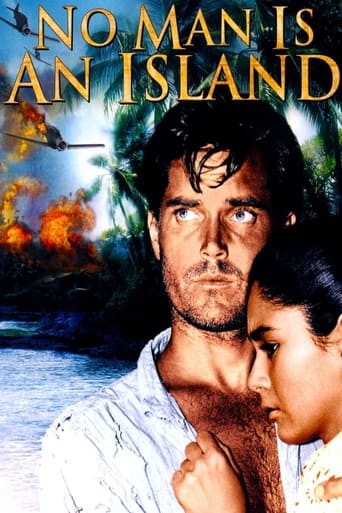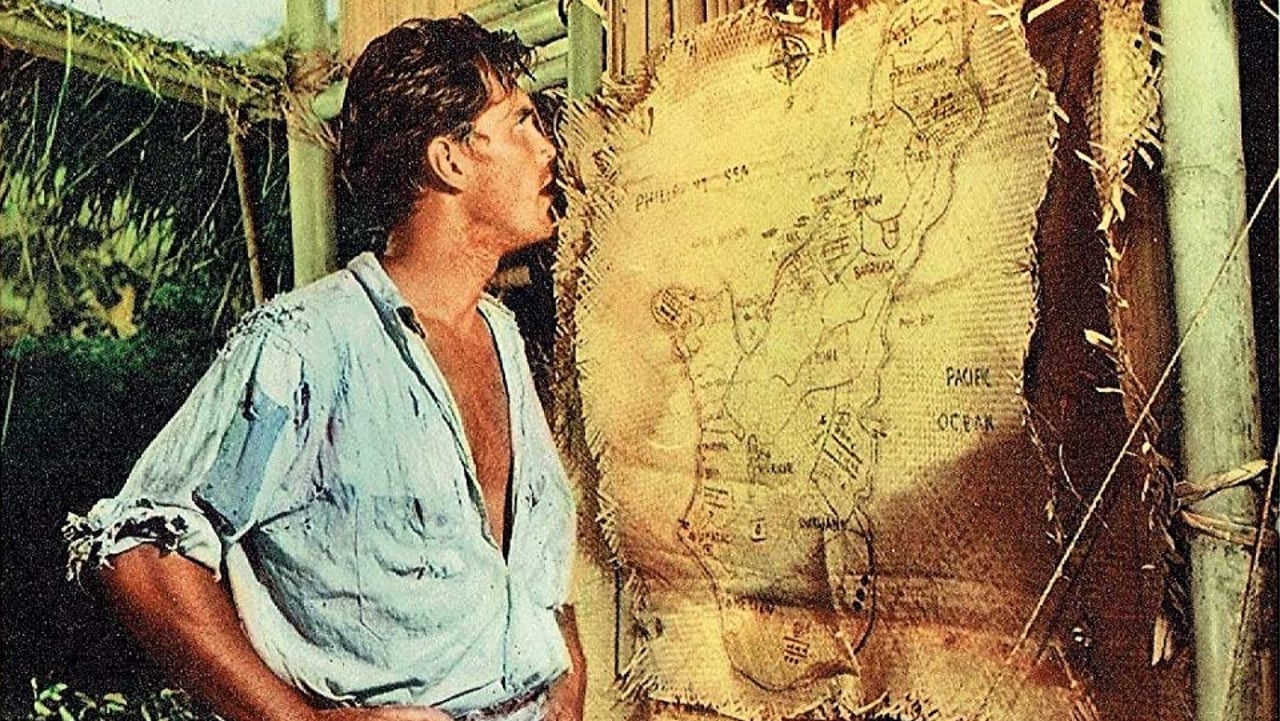Edgar Soberon Torchia
I understand very well the value war veterans or many military persons can give to their memories of what they experienced while being in battles or accomplishing missions during war at different fronts. But cinema is something else, and depicting them on screen with fine results from both the artistic and commercial angles is not an easy task. More often than not the products resemble a long recruitment ad, an exaltation of a warmongering spirit, or a justification of actions which are ethically questionable as violating the national autonomy of a foreign country under the guise of "fight of democracy", no matter how realistic or vivid these products seem, and make these men and women revive their past experiences. Some are expensive productions, many are low-budget, some are very good and some are very bad. This American-Filipino co- production is a good example of cheap, proto-fascist cinema, with a formula script supposedly inspired by soldier George R. Tweed's "heroics" during Japanese invasion in Guam, turned into adventure non-sense, loaded with bad dialogue and "exotic" touches by the Filipino actors. Unfortunately, the make-up department had no pancake for them, so while Jeffrey Hunter sports a glorious tan, the others are all made-up with obvious powders intended for Caucasians. Add the U.S. Army propaganda, the scratched war footage, the shaky sets, and a score that goes from pompous to soapy, and you have a dreadful product. And it's true, maybe this story deserves a good remake.
Lechuguilla
George Tweed (Jeffrey Hunter) is an American Navy man scheduled to leave the Pacific island of Guam and return to the U.S on December 7, 1941. But that's the day that Japanese planes bomb Pear Harbor. And Guam is now under surprise attack as well. Tweed and four of his Navy buddies have a choice. They can surrender to the enemy on Guam, or they can make a run for it. They decide to run. Not all of them survive.The title "No Man Is An Island" refers to a poem by English poet John Donne. The idea is that each person is connected to his or her surroundings. In the case of Tweed and his buddies, this connectivity comes in the form of substantial help they receive from Guam natives, sympathetic to Americans. And not all helpers are adults; some are children. This assistance, which comes with great sacrifice, is basically the theme of the film.Except for the Japanese enemy, most of the characters are likable, including Tweed. And his story on Guam is one of drama and adventure, as he draws on his own inner resourcefulness and courage to survive, to augment the help from others. I also like the Mrs. Nakamura character (Chichay), a native Asian woman, small in stature, but with a big heart. She is shrewd and spunky, as she endures the idiocy of those around her.Cinematography is acceptable for the era in which the film was made, but suffers in comparison to modern films. The use of day for night camera filters is obvious. And stock war footage, especially near the beginning and at the end, convey a cheap look and feel. Background music is annoying as it is so nondescript. Casting and acting are acceptable.The film is based on a true story. Whether all the plot points are historically accurate or some script liberties have been taken, I don't know. What I do know is that if it had not been for this film, I would have no idea that George Tweed ever existed. I'm glad that the film is available for viewing. "No Man Is An Island" is a fine WWII film that deserves to be seen by anyone interested in that historical era.
drystyx
This is an excellent war movie based on a true story. The action is great, and the characters very identifiable. There is one really mean character, but his character does ring true for the times, and he reveals a prejudice that was present. In fact, as a historical adventure based on true events, certain liberties are taken to show higher truths. That is what this movie does. Characters will often be composites to show the events in a condensed version. Otherwise, the movie would be forty hours long. This movie centralizes on Tweed and four other Americans trying to escape occupied Japanese territory. They are aided by natives, and that is what the movie is about. Modern audiences won't like the fact that Tweed is a likable character. One of the advantages of older movies is that they didn't present all lead characters as ridiculous stereotypes and homicidal maniacs. Also, some puritans insist that every action be historically beyond doubt. To read some of the reviews here, you would think that they couldn't show Tweed eating rice without having a receipt for the rice in the Smithsonian Institute. Just enjoy a well done movie with great actors. Remember, who did the studio get to play the son of God in a later movie?
rsoonsa
Jeffrey Hunter plays the part of George Tweed, the redoubtable U.S. Navy radioman who survived in hiding on Guam during the Japanese occupation of that island, with the assistance of many Guamanians who willingly turned their lives upside-down to protect him. Hunter is woefully miscast; devout Antonio Antero, the Chamorro who was Tweed's principal benefactor during his ordeal, was convinced of his Christian duty to assist the American due to the latter's appearance: gaunt and dirty with long hair and sullied clothing, akin to Christ before the crucifixion, but Hunter is obviously well-nourished with his hair style never disturbed, and with barely a nod by his demeanor to his taxing situation. Tweed, as the sole American survivor of the invasion, was a totem to the people native to Guam that the United States was still there, but this fact is overlooked in this production. Although Tweed was hidden within a cave in the island's southeast, a popular tourist attraction today, the scenario places him atop a mountain where he would be in plain view of enemy aircraft, a serious miscue in light of the fact that much of the occupiers' activity was revolving about attempts at his capture. Tweed cleverly repaired a damaged radio and typewriter and through skillful use of both helped to offset Japanese propaganda concerning the true progress of the war; however, this is touched on but briefly and in a distorted fashion, at that. Although obviously designed as packaged Hollywood entertainment, the screen story appears jejune when one recalls that many died to preserve the safety of the real-life Tweed. Filmed in the Philippines with largely local performers, NO MAN IS AN ISLAND flags from consistently poor production characteristics, which tend to jar a viewer's sensibilities. Not surprisingly, the acting is variable, with Marshall Thompson being wasted, and Hunter swallowing many of his lines as well as being uncomfortably saddled with a vapid love interest. Since the script does not delineate a point of view, and there is scant in the way of direction, we are left with one cliché-ridden scene after another. Some potentially engaging sub-plots, in particular one formed from the plight of Japanese-Americans remaining on Guam during the occupation, are only grazed fragments here. Talented Basil Wrangell does his best at editing this affair, but his cachet is finally defeated as the movie flounders forward to its hackneyed conclusion.


 AD
AD



